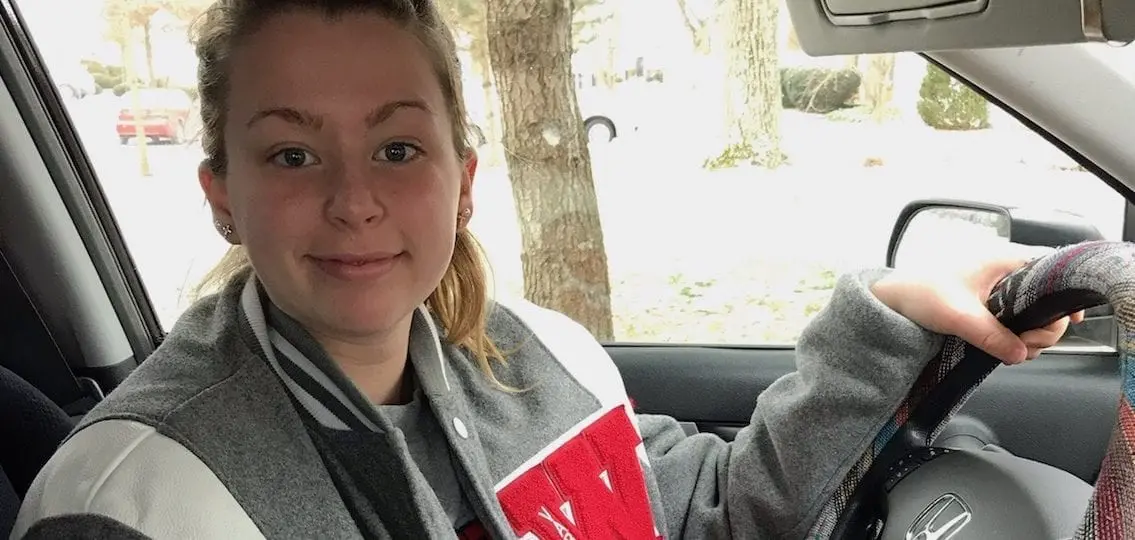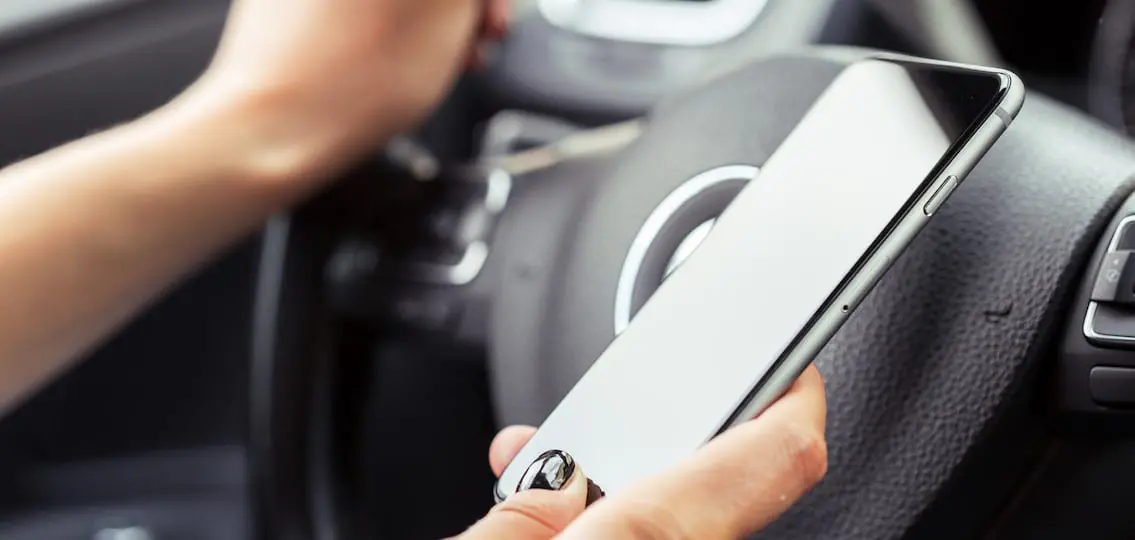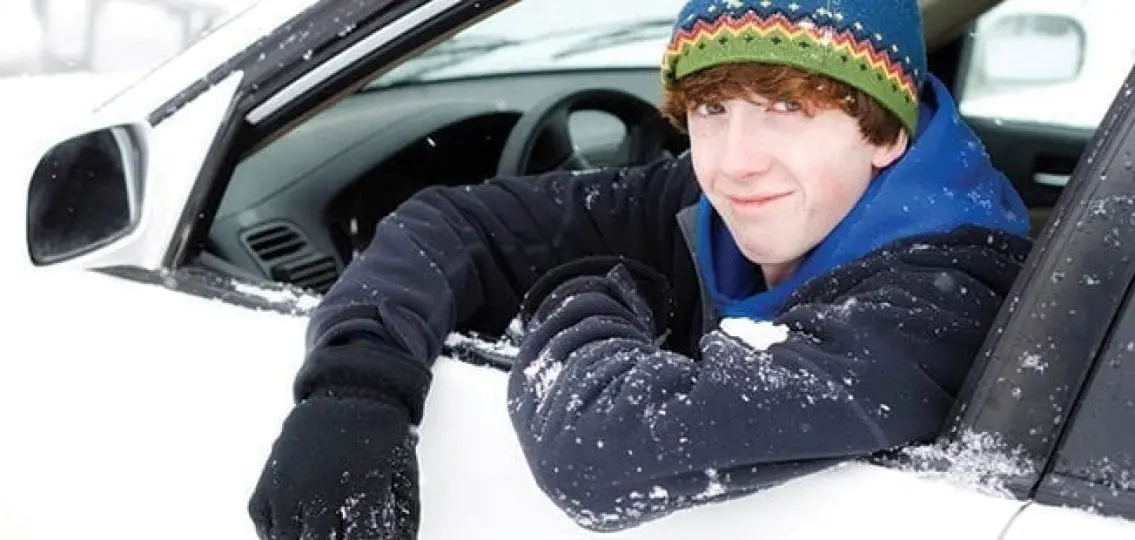Your first instinct may be to keep teen drivers at home when winter weather hits, but this may not always be possible. Prepare them ahead of time. Give them some tips for driving in snow and ice. Here are 6 winter driving tips to keep your new driver safe on the roads.

Winter Driving Safety Tips For Teens
1. Get your car ready for winter.
Make sure that your car has all the necessary winter equipment. Be prepared for cold temperatures and bad driving conditions. Here’s what you need;
- keep your washer fluid full
- carry a shovel
- store an emergency kit
- keep an ice scraper/brush in the car
- check your anti-freeze
- change to winter wiper blades
- mount winter tires on all four wheels
“All-season tires or summer tires are going to harden up at about 45 degrees,” says Kurt Spitzner, an instructor at Bridgestone Winter Driving School in Steamboat Springs, Colorado. “When the rubber hardens up, you lose your grip on the road, even in the best of conditions.”
Winter tires are designed specifically for the rubber to stay soft and pliable and grip the road, even in extreme temperature conditions where it reaches 20 below zero.
A handy rule of thumb: If the air is cold enough to see your breath, you should have winter tires on your vehicle.
2. Understand winter road conditions.
Everyone must anticipate that less-than-ideal road surfaces will result in reduced grip, and drivers will need to brake earlier. “For a new driver who just got his license in April, that driver has become accustomed to driving on a nice dry surface with perfect grip,” says Spitzner. “Now you may be suddenly faced with less-than-perfect road conditions and grip.”
| [adrotate banner=”99″] |
3. Drive for conditions, not posted speed.
An obvious winter driving tip is that getting around in winter can take longer, so adjust your speed to conditions instead of trying to maintain the speed limit. Traction control, stability control, and anti-lock brakes help you control your vehicle. These tools “will not help you very much if you are exceeding speed for the conditions,” says Spitzner.
4. Learn how to brake on winter roads.
It’s important to learn how to use the brakes safely during bad driving conditions. If you feel like you are going too fast, warns Spitzner, adjust your speed gently. Take your foot off the gas, as slamming on the brakes may cause the car to skid. When you do use your brakes, do so gently and earlier than you would in non-winter conditions. Driving slowly is important during the winter; drivers can lose control of a car when they hit the brakes hard on an icy road. This is true even on cars equipped with safety features, like anti-lock brakes and stability control.
5. Look where you want to go.
Practice situational awareness, especially in bad driving conditions, and look up over the front of your vehicle instead of down at the road. “Sit back in your seat, with relaxed body language, instead of hunching up over the wheel,” says Spitzner. “Keep your eyes as far down the road as possible, scanning from left to right, so you have as much time as possible to respond.”
6. Practice with an adult.
A new driver’s first experience with winter driving should not happen during a major blizzard. Under close supervision, let your teen practice slow speed maneuvers and braking on a wide open snow- or ice-covered parking lot. Consider limiting your teen’s driving on slippery conditions to daylight hours until your new driver has gained experience.






